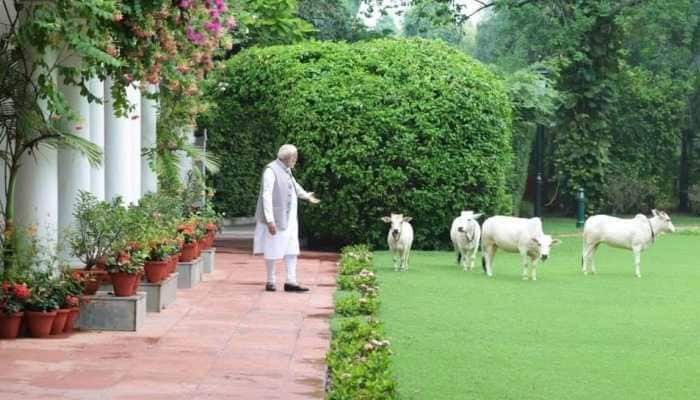India’s livestock population decreases by 3.33 percent: Census
The population of indigenous cattle has decreased by 8.94 per cent even as the number of female animals has increased.
Trending Photos
)
Ashok Kumar/OneWorld South Asia
New Delhi: They might be the farmer’s friend, but the population of India’s domestic animals is declining, according to India’s nineteenth livestock census. According to the census, population of India’s livestock has declined by 3.33 per cent.
The news might not be music to the ears, especially as the country is witnessing a shortage in rainfall – farmers are known to sell cattle in distress.
The survey points to a gloomy picture. In a country where the biggest chunk of population is dependent on farming and allied activities, and where domestic animals form a substantial base of a farmer’s incomes, it points to a reduced level of support families get from livestock rearing.
The total livestock population in India consisting of cattle, buffalo, sheep, goat, pig, horses & ponies, mules, donkeys, camels, Mithun and Yak in the country is 512.05 million numbers in 2012. The total livestock population has decreased by about 3.33 per cent over the previous census.
The census report comes from an elaborate exercise conducted throughout the country. The survey has disaggregated the population on lines of male and female animal populations. No prizes of guessing though, the number of female animals has increased, while the number of the males has reduced.
The survey states that the livestock population has increased substantially in Gujarat (15.36 per cent), Uttar Pradesh (14.01 per cent), Assam (10.77 per cent), Punjab (9.57 per cent) Bihar (8.56 per cent); Sikkim (7.96 per cent), Meghalaya (7.41 per cent), and Chhattisgarh (4.34 per cent).
The census also points to an increase in the number of milch animals (in-milk and dry), cows and buffaloes, from 111.09 million to 118.59 million, an increase of 6.75 per cent. The number of animals in milk, cows and buffaloes, has increased from 77.04 million to 80.52 million showing a growth of 4.51 per cent.
The survey says that the female cattle (cows) population has increased by 6.52 per cent over the previous census (2007) and the total number of female cattle in 2012 is 122.9 million numbers.
The female buffalo population has also increased by 7.99 per cent over the previous census and the total number of female buffalo is 92.5 million numbers in 2012. The population of exotic or crossbred milch cattle has also increased from 14.4 million to 19.42 million, an increase of 34.78 per cent.
Sadly, the population of indigenous cattle has decreased by 8.94 per cent.
However, in the same breath, the census operation has registered an increase in the overall population of the desi breeds as the number of indigenous milch cattle increased from 48.04 million to 48.12 million, an increase of 0.17 per cent. The milch buffaloes increased from 48.64 million to 51.05 million with an increase of 4.95 per cent over previous census.
The total sheep in the country is 65.06 million numbers in 2012, declined by about 9.07 per cent over census 2007.The Goat population has declined by 3.82 per cent and the total Goat in the country is 135.17 million numbers in 2012.
Animals known as beasts of burden have also shown a decline in their population growth. The camel population has decreased by 22.48% over the previous census and the total Camels in the country is 0.4 million numbers in 2012.
Also, the total Donkey population in the country has decreased by 27.22% over the previous census and the total donkeys in the country are 0.32 million numbers in 2012.
The total poultry population in the country has increased by 12.39% over the previous census and the total poultry in the country is 729.2 million numbers in 2012.
The mountainous regions particularly the northeastern part of the country has good news as the Mithun and Yak population has registered a growth rates of 12.98 per cent and -7.64 per cent respectively over the previous census.
Live Tv







)
)
)
)
)
)
)
)
)
)
